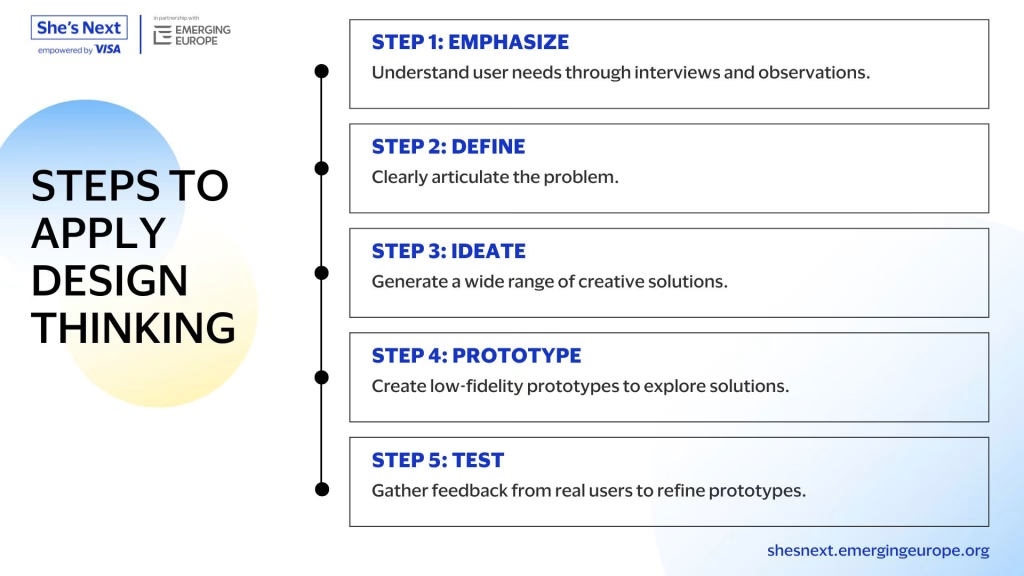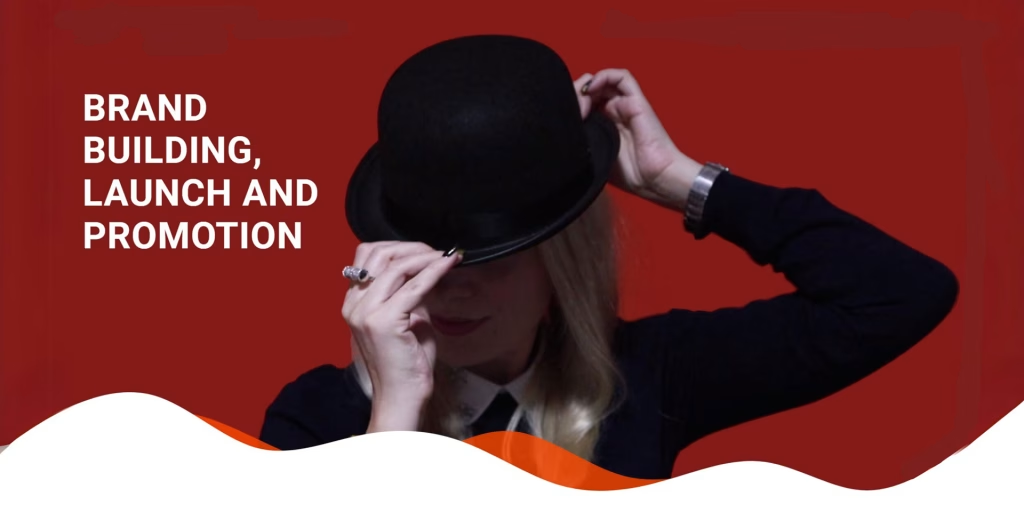
How to Use Design Thinking for Business Solutions: A Step-by-Step Guide
Design thinking is a powerful methodology for solving complex business problems. It focuses on understanding user needs, fostering creativity, and iterative problem-solving.
This article will provide actionable steps to apply design thinking for innovative business solutions that cater to your unique audience.
Understanding Design Thinking
Design thinking is a problem-solving approach that prioritises empathy, ideation, prototyping, and testing. It encourages a deep understanding of the user’s experience and needs, leading to innovative and effective solutions.
Benefits include fostering creativity, developing user-centred solutions, and enabling iterative improvements.
For illustrative purposes, we will use the example of a travel agency.
Preparing for a Design Thinking Process
Set Clear Objectives
Define the purpose and goals of your design thinking process.
Write a clear and concise objective statement, such as, ‘Our goal is to develop a seamless online booking system for our customers’.
Assemble a Cross-Functional Team
Gather a team with diverse skills and perspectives. It is important to include members from different departments, so you could invite team members from IT, customer service, marketing, and operations.
Create a Collaborative Environment
Ensure a space that encourages creativity and collaboration.
Arrange a workspace with necessary tools and supplies, such as whiteboards, sticky notes, markers, and comfortable seating.
Steps to Apply Design Thinking
Empathise
Understand the needs and challenges of end users. Conduct interviews, surveys, and observations to gather user insights.
The travel agency could, for example, interview frequent travellers to understand their pain points with current booking systems and gather their preferences for a new system.
Define
Clearly articulate the problem to be solved. Synthesize user research to define a clear problem statement.
In our travel agency example, they could define the problem as, ‘customers find our current booking system too complicated, leading to high abandonment rates’.

Ideate
Generate a wide range of ideas and potential solutions. Use brainstorming techniques to come up with creative solutions.
The travel agency could conduct a brainstorming session to generate ideas for simplifying the booking process and enhancing user experience.
Prototype
Develop simple, tangible representations of selected ideas. Create low-fidelity prototypes to explore different solutions.
A prototype for the travel agency could be designing wireframes or mock-ups of the new booking system interface.
Test
Evaluate prototypes with real users to gather feedback. Conduct usability testing to refine prototypes.
The travel agency could test the booking system mock-ups with a group of users and gather their feedback for improvements.
Implementing Design Thinking Solutions
Iterate Based on Feedback
Continuously refine solutions based on user feedback. Make iterative improvements to the prototypes.
The travel agency could improve its product by constantly revising the booking system interface based on user feedback and test again, until satisfaction is achieved.
Develop and Launch the Final Solution
Move from prototype to final product development. Collaborate with development teams to implement the solution.
For the travel agency, working with developers to build the final version of the booking system and launch it to the market would be an effective way of getting to the finish line.
Monitor and Evaluate
Continuously monitor the performance and gather user feedback post-launch. Use analytics and user feedback to assess the solution’s effectiveness.
Constantly track customer engagement and gather feedback to identify areas for further improvement.
Design thinking emphasises a user-centred approach and continuous iteration, making it a valuable methodology for solving business problems and driving innovation.
Start applying these steps today to develop creative, effective solutions for your business challenges.
New Free Courses — Made for Ambitious Women Entrepreneurs!
It’s time to grow smarter, adapt faster, and take your business global.
Explore two powerful courses available exclusively to She’s Next members:
The Reinvention Masterclass for Start-up Founders
Beyond Borders: Building for Global Success
Enroll today — it’s free!






Responses